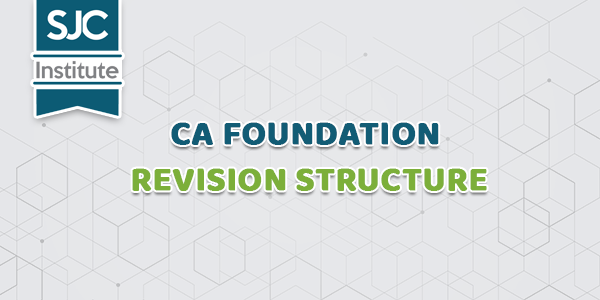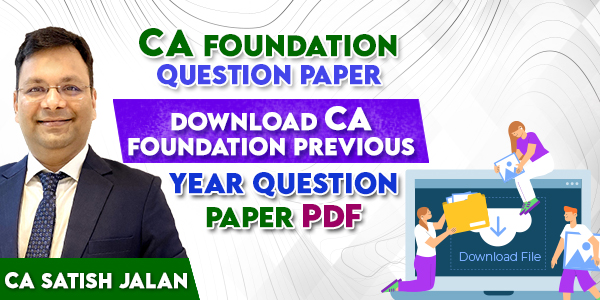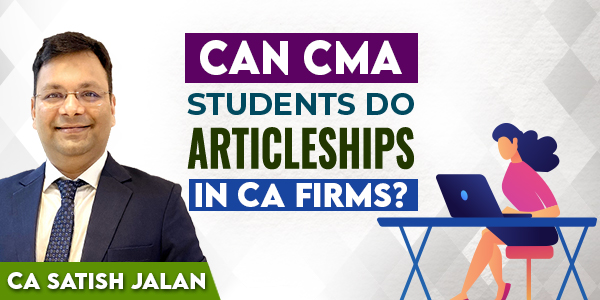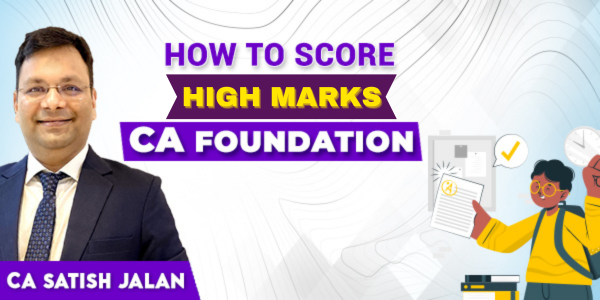08
Oct, 2021
CA Foundation Revision Structure
-
CA Foundation
CA Satish Jalan
Do you know why the result of the CA Foundation is only 25 per cent? All students invest the same time and effort into preparation throughout the course. Then, what can be the reason that only 25% of students pass?
The answer lies in the "THE SUPER SMART REVISION".
Here, we will help you in designing a step by step guide to this power revision structure.
"THE SUPER SMART REVISION" makes you go through the entire course most effectively. This structure can help you in clearing your exam in “One Shot”.
This revision structure is empirically derived over time. This is the best formula and is 100% effective.
To be able to design the structure, you need to know the below:
- How to prepare the Revision Schedule.
- Then, we will discuss the SMART STUDY GUIDE.
- We will discuss the ABC analysis of the subject.
- Here we will talk about DO and DON'Ts.
Making the Revision Schedule
When you do the classes or you read the subject for the first time, you just get familiar with the surface knowledge. But, there are usually certain gaps in understanding, which gets crystal clear once you revise and practice.
As a rule, "practice makes perfect", and this is why one cannot master a skill until and unless they practice/repeat it.
This is also called the "Learning Curve Effect”. (The Learning Curve theory states that the learning efficiency of a learner increases over time as the learner performs the task repeatedly).
The revision phase requires that the revision must be done in three parts. At SJC, we refer to this as the THREE TIER REVISION MODEL. It consists of three main stages.
The three-tier Revision Time Schedule: The revision period should be either 45 days or 60 days. The hours to be studied each day is at least 10 hours per day.
TIER ONE:
In this stage, you understand the requirement of the subject. At the foundation stage, there are four subjects which are accounting, maths, law and economics.
Time Allocation:
Allocate the first 30 days to this revision.
In the foundation stage, two of the major subjects are Accounting and Mathematics. Then, two of the minor subjects are Law and Economics.
Following this, you must divide 30 days in a 2:2:1:1 ratio for the four subjects. It will come up to 10 days for Accounting and Mathematics each and 5 days each for Law and Economics.
Things to study:
You should study all the topics of ICAI MATERIAL of all the subjects during this period. It is necessary to practice every question, rather than just checking out the solution. It is regardless of whether you have practised it before.
Pro Tip:
Must do ABC categorization of each question you solve here. In the first round of revisions, one needs to make summary notes on each chapter. The most effective form of summary notes is a self-made one.
TIER TWO:
In this stage, you focus on retention rather than understanding
Time Allocation:
The second revision will have a tentative timeline of 30 days or 15 days.
Following the 2:2:1:1 ratio, allocate the days for the second revision as well, for your four subjects.
Things To Study
Review each concept and question done in the first revision and complete the topics left in the first revision, due to the lack of time.
In this phase, apart from the above, the Revision Test Papers and Mock Test Papers by ICAI must be attempted.
Pro Tip
Create a real exam-like environment and do a self tally of your preparation by attempting a mock test. This helps you to understand where you may still make mistakes and so you don't repeat them.
TIER THREE:
This is the last stage of the three-tier revision on the day before the exam.
At this stage, you are not supposed to do anything new. Ignore anything that others are poking you to do. Focus on what you have already studied in Tier one and Tier two. Follow ABC Markings for sums and check your memory whether you remember the concepts and tricks of the important questions.
Now, You might ask, “How can we make our preparation more full proof?”
What is the next step?
Well for that, following a SMART Study Guide Blueprint is essential. This is a must for a better understanding and implementation of the structure above.
THE SMART STUDY GUIDE
As it is correctly said that “Smart work is more often cited than hard work”.
What can you do to comply with this rule during your Foundation exams?
The SMART method says that you must identify your strengths and weaknesses i.e. your strong chapters and your weak chapters along with the chapters that are relevant for exams, and then match them up.
You can consider this example: There are five topics or 40 per cent of the syllabus that are most relevant to the examination. These must be your strongest areas or you can say that you must know all about it.
Pro Tip:
To select the most important topics, you must have or make a birds-eye view of the entire syllabus. You can either make it yourself by referring to past papers or ask the enrolled institute for one or buy a scanner.
THE ABC Analysis:
This is the third and most important step in the revision structure. But why is that?
Remember that your ability to perform in the exam is dependent on your ability to revise maximum the day before the exam.
Well, the key is to break down the whole syllabus according to the tricks involved in solving the problems. Now let us go through this in detail:
The ABC analysis can be defined as:
An ABC analysis is a method for classifying the questions as per their importance and then categorising them into A, B and C marking.
A category - Questions that have multiple tricks associated fall under this category.
B category- Questions that have only one trick involved fall under this category.
C category- Simple questions that have no tricks.
Pro Tip:
The day before the exam, you must review the A and B category tricks. If the time allows, you must review the C category topics as well.
DO’s and DON'Ts.
- Don't get overwhelmed by too much information. A lot of advice and not enough action equals no results.
- Maintain a regular schedule. If schedules change for any reason, don't fall behind with your studies. Reschedule as per remaining days.
- Make sure that you dedicate sufficient time to each subject both day and hour wise.
- During the revision period, maintaining a healthy lifestyle is important.
- Take one subject at a time or a maximum of two. Doing all four subjects together may make your study haphazard.
- Keep taking breaks of at least one hour after every four hours of focused study.
- Be confident and keep saying to yourself - “It's easy, and I will pass this exam”
SUMMARY
- There are three levels of revision.
- A SMART study from the birds' eye view.
- ABC analysis of the questions to revise all in a nutshell.
If you need any further information or how to do this revision, do not hesitate to comment below.
All About CA Foundation
Popular Posts






No Comments